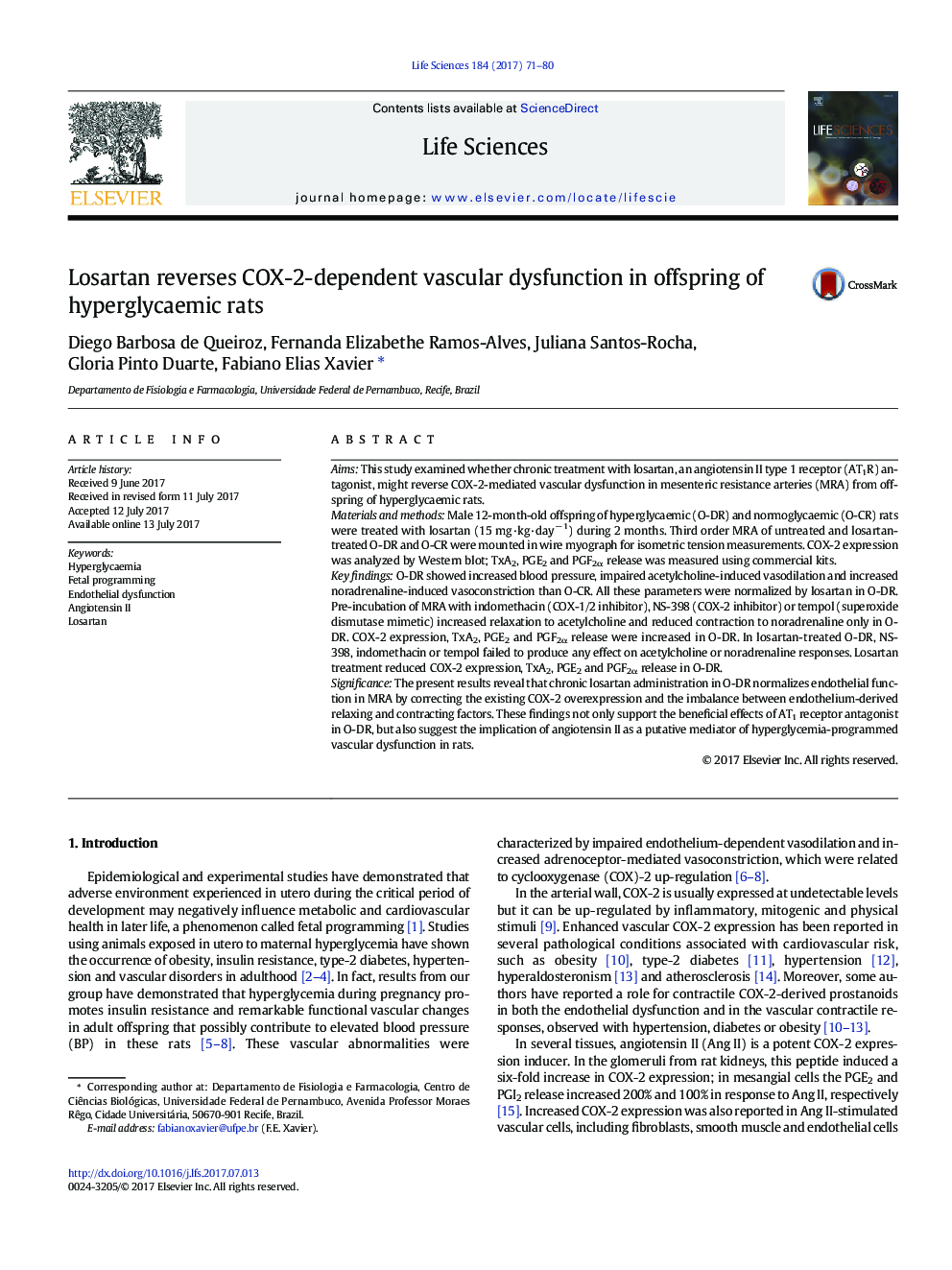| کد مقاله | کد نشریه | سال انتشار | مقاله انگلیسی | نسخه تمام متن |
|---|---|---|---|---|
| 5556759 | 1560544 | 2017 | 10 صفحه PDF | دانلود رایگان |

AimsThis study examined whether chronic treatment with losartan, an angiotensin II type 1 receptor (AT1R) antagonist, might reverse COX-2-mediated vascular dysfunction in mesenteric resistance arteries (MRA) from offspring of hyperglycaemic rats.Materials and methodsMale 12-month-old offspring of hyperglycaemic (O-DR) and normoglycaemic (O-CR) rats were treated with losartan (15 mg·kg·dayâ 1) during 2 months. Third order MRA of untreated and losartan-treated O-DR and O-CR were mounted in wire myograph for isometric tension measurements. COX-2 expression was analyzed by Western blot; TxA2, PGE2 and PGF2α release was measured using commercial kits.Key findingsO-DR showed increased blood pressure, impaired acetylcholine-induced vasodilation and increased noradrenaline-induced vasoconstriction than O-CR. All these parameters were normalized by losartan in O-DR. Pre-incubation of MRA with indomethacin (COX-1/2 inhibitor), NS-398 (COX-2 inhibitor) or tempol (superoxide dismutase mimetic) increased relaxation to acetylcholine and reduced contraction to noradrenaline only in O-DR. COX-2 expression, TxA2, PGE2 and PGF2α release were increased in O-DR. In losartan-treated O-DR, NS-398, indomethacin or tempol failed to produce any effect on acetylcholine or noradrenaline responses. Losartan treatment reduced COX-2 expression, TxA2, PGE2 and PGF2α release in O-DR.SignificanceThe present results reveal that chronic losartan administration in O-DR normalizes endothelial function in MRA by correcting the existing COX-2 overexpression and the imbalance between endothelium-derived relaxing and contracting factors. These findings not only support the beneficial effects of AT1 receptor antagonist in O-DR, but also suggest the implication of angiotensin II as a putative mediator of hyperglycemia-programmed vascular dysfunction in rats.
Journal: Life Sciences - Volume 184, 1 September 2017, Pages 71-80